Advertisements
Chapters
1.2: Integrative Grammar Practice 1
2.1: Determiners
2.2: Integrative Grammar Practice 2
▶ 3.1: Future Time Reference
3.2: Integrative Grammar Practice 3
4: Modals
5.1: Connectors
5.2: Integrative Grammar Practice 4
6.1: The Passive
6.2: Integrative Grammar Practice 5
7.1: Reported Speech
7.2: Integrative Grammar Practice 6
8.1: Prepositions
8.2: Integrative Grammar Practice 7
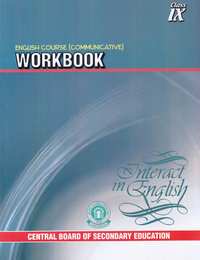
Advertisements
Solutions for Chapter 3.1: Future Time Reference
Below listed, you can find solutions for Chapter 3.1 of CBSE CBSE for English Communicative - Workbook Interact in English Class 9.
CBSE solutions for English Communicative - Workbook Interact in English Class 9 3.1 Future Time Reference Exercises [Pages 37 - 44]
Read the following story
There lived a wise old man in Purkul, Dehradun. The villagers looked up to him and approached him for all their problems. Three naughty boys Amar, Naveen and Praveen wanted to test the old man's wisdom. One fine morning they caught a butterfly while playing in the garden. Amar had the
butterfly in his hand. He said, "We will go to the old man and ask him ifthe butterfly is dead or alive. If the old man says, 'the butterfly is dead', I will open my hands and release the butterfly. It will fly away." "If he says it is alive?" asked N aveen looking at Amar with a smirk. "I will crush the butterfly and show him the dead insect," said Amar. The three of them set forth with their wonderful plan.
Amar went to the old man and said, "Sir, the villagers say you can predict the future. Now tell us if the butterfly in my hand is dead or alive?" The old man looked at the three boys with a serene smile and said, "It is in your hands."
Read these sentences from the story.
1. We will go to the old man.
2. Iwillopenmyhands.
3. It will flyaway.
4. I will crush the butterfly.
The modal will is used to talk about a temporary event in progress at some
point in future.
Will is used to denote _________ time.
Did you know?
There are different constructions in English which can be used to refer to
future time.
1. Use of the simple present tense.
a. The IPL begins on 20th April.
b. If the newly introduced vaccine works, AIDS can be cured.
2. Use of shall/will
Will/shall is used to make a prediction about future events, in
advertisements, posters etc.
e.g. a. You will win the 1st prize.
b. The Nano car will be on the roads soon.
c. You shall lead a happy life.
3. Use of going to
Going to is normally used to refer to future events in two cases
(a) If there is a present indication of the future event.
e.g. India is going to emerge as a Super Power in 2020.
(b) to express intention
e.g. Smitha is going to marry Akshay.
4. Use of present continuous tense (be+ verb+ ing)
Present continuous tense is used to refer to future events that have been
already planned.
e.g. a. I'm meeting the Project Manger this evening.
b. I'm sorry I can't meet you tomorrow. I'm visiting my friend.
5. Use of be + about to + infinitive.
e.g. The train is about to leave.
6. Useofbe+to+v
e.g. Obama is to visit India in October.
Look at sentences in Column A. Match them with the appropriate explanation in Column B.
| A | B |
| 1. Next Friday is the 29th of May. |
a. emphasizing that something will happen very soon |
| 2. I’ll have left by the time you get here. |
b. making a promise |
| 3. I’m visiting my uncle on Sunday. |
c. predicting that something will be true at a given time in the future |
| 4. I’ll send the photographs as soon as I can. |
d. stating something which is a certainty |
| 5. The lesson is about to start… hurry! |
e. reporting a decision made earlier |
| 6. The population of our country will increase in the next ten years. |
f. making a prediction about future events |
Look at the following pictures/diagrams. Fill in the blanks with an appropriate sentence/phrase, using suitable future time reference. The first one has been done for you as an example:
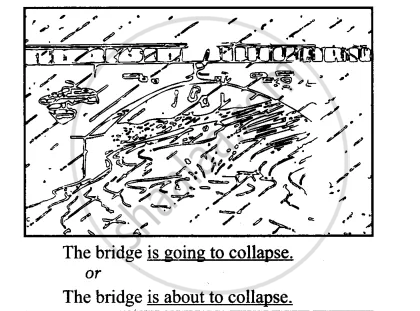
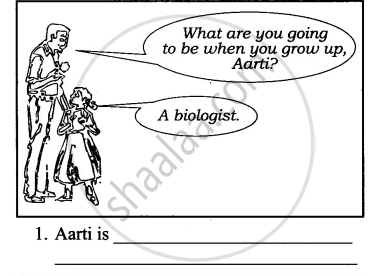

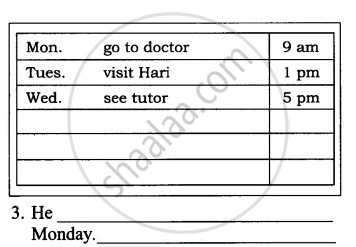

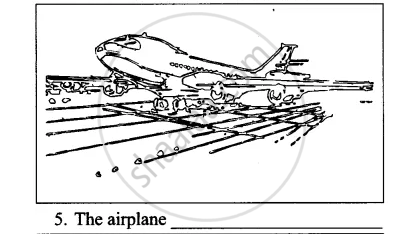

Simple Present and Present Continuous
Mr. Madan is going on tour next week. Look at his itinerary.
| Mr. Madan | Tour of North India and Nepal | ||
| Mon | 7th | Mumbai 06:30 Peace Conference |
Delhi 08:30 |
| Tues | 8th | Delhi 07:30 Cultural Centre |
Agra 10:30 |
| Wed | 9th | Agra 09:30 Local School Head Teacher |
Varanasi 13:30 |
| Thurs | 10th | Varanasi 08:00 Discuss Trade Unions |
Patna 18:30 |
| Fri | 11th | Patna 14:00 Himalayan Project |
Kathmandu 17:00 |
| Sat | 12th | Kathmandu 11:00 | Delhi 14:00 |
Describe Mr. Madan’s schedule for next week. Use verbs from the table below.
Will and Shall
Look at this cartoon which shows the difference in the use of present continuous and will to express the future.
It’s Mike’s birthday on January 2nd.

Work in pairs. You and your partner are made in charge of your school. What will you change?
Discuss and then write about the decisions you would make.
Use the various verb forms available for future time reference.
e.g. Now we are in charge of the school, we shall…
Be the Master of Ceremonies!
The Honey Bee Creative Club of your school is organising an annual cultural programme. You are the compere for the programme. Complete the following details by filling in with suitable modals and phrases. This will help you when you address a large audience.
Good evening, respected principal, teachers and my dear friends. Welcome to the Honey Bee Creative Club Cultural programme. The guest (a)_________ arrive. Many (b)__________presented this evening. We (c)__________ the programme with an invocation. The dancers are (d)__________ entertain you by performing the bhangra. The school choir (e)_________a song on National Integration. The programme (f)__________ with a formal vote of thanks by the principal.
Future Perfect and Future Continuous
Look at the following sentences.

Match words from the different columns to make reasonable predictions. Then write them down in the space below. One has been done as an example.
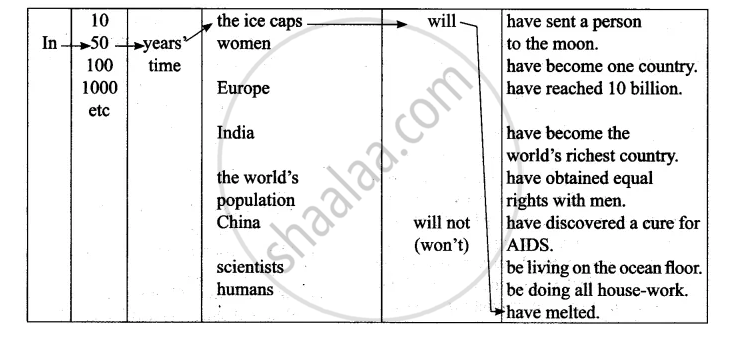
Solutions for 3.1: Future Time Reference

CBSE solutions for English Communicative - Workbook Interact in English Class 9 chapter 3.1 - Future Time Reference
Shaalaa.com has the CBSE Mathematics English Communicative - Workbook Interact in English Class 9 CBSE solutions in a manner that help students grasp basic concepts better and faster. The detailed, step-by-step solutions will help you understand the concepts better and clarify any confusion. CBSE solutions for Mathematics English Communicative - Workbook Interact in English Class 9 CBSE 3.1 (Future Time Reference) include all questions with answers and detailed explanations. This will clear students' doubts about questions and improve their application skills while preparing for board exams.
Further, we at Shaalaa.com provide such solutions so students can prepare for written exams. CBSE textbook solutions can be a core help for self-study and provide excellent self-help guidance for students.
Concepts covered in English Communicative - Workbook Interact in English Class 9 chapter 3.1 Future Time Reference are Literature Textbook and Extended Reading Text, Writing and Grammar, Reading.
Using CBSE English Communicative - Workbook Interact in English Class 9 solutions Future Time Reference exercise by students is an easy way to prepare for the exams, as they involve solutions arranged chapter-wise and also page-wise. The questions involved in CBSE Solutions are essential questions that can be asked in the final exam. Maximum CBSE English Communicative - Workbook Interact in English Class 9 students prefer CBSE Textbook Solutions to score more in exams.
Get the free view of Chapter 3.1, Future Time Reference English Communicative - Workbook Interact in English Class 9 additional questions for Mathematics English Communicative - Workbook Interact in English Class 9 CBSE, and you can use Shaalaa.com to keep it handy for your exam preparation.
